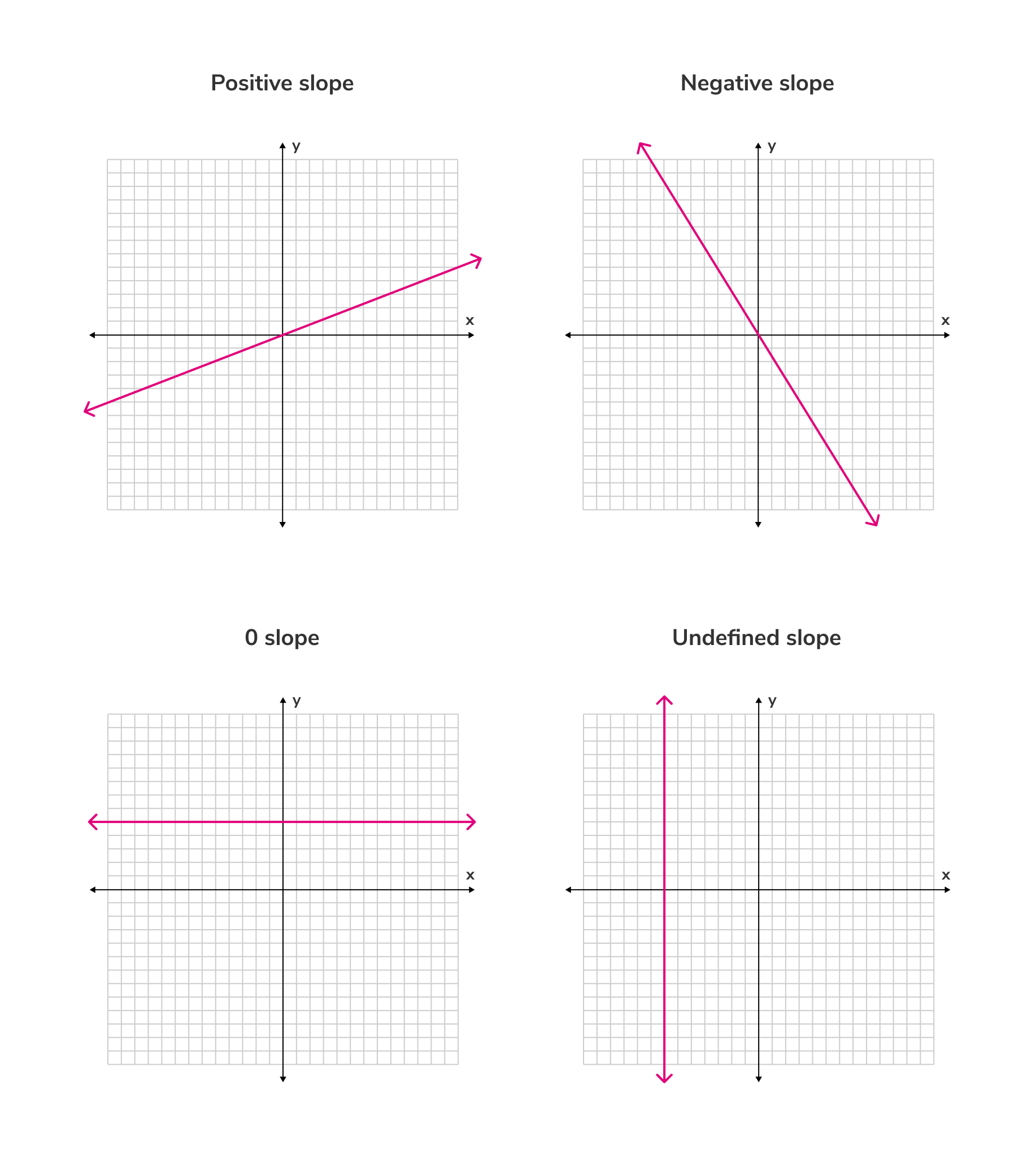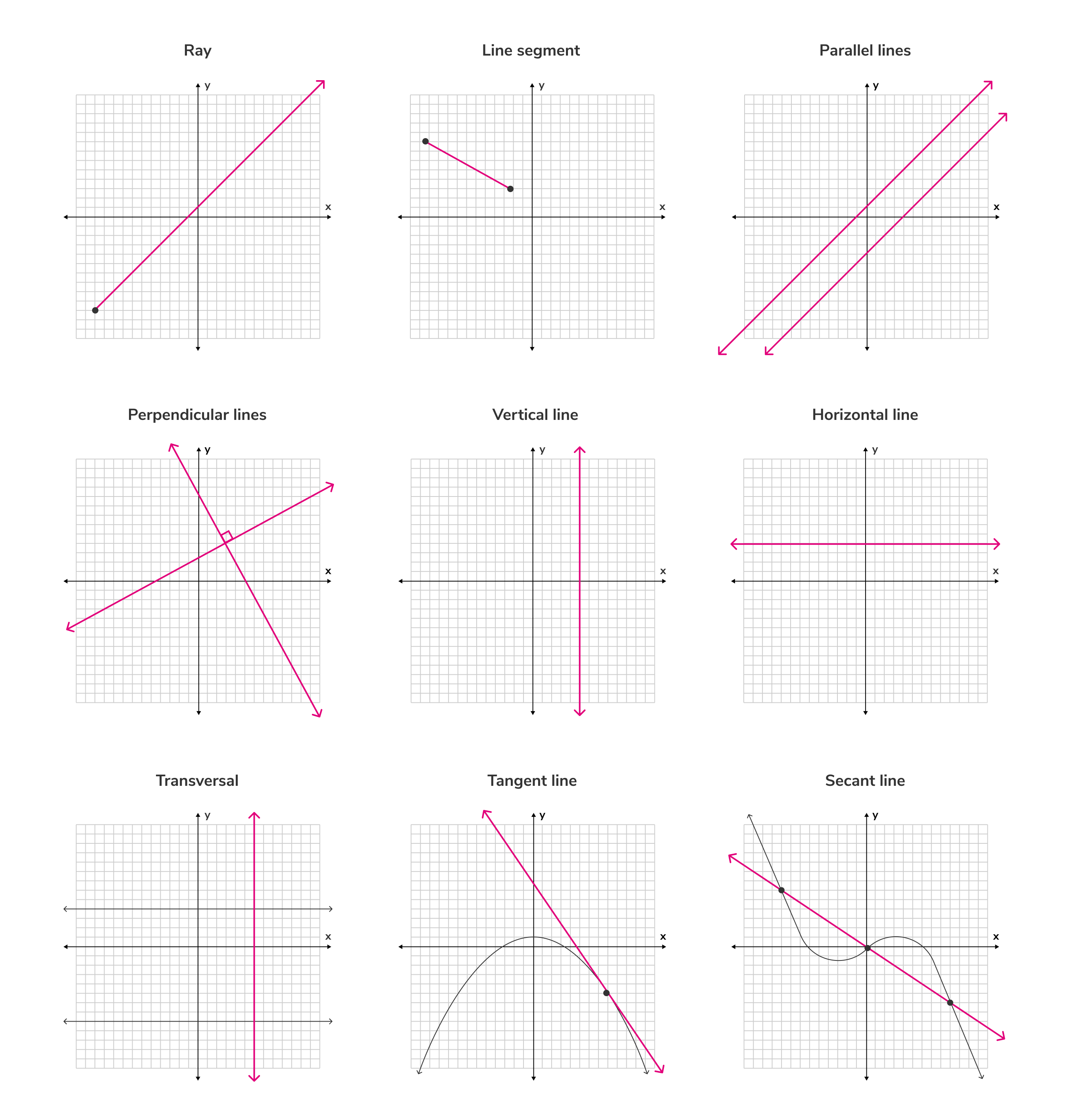Tiger Algebra Calculator
Properties of a straight lines
A straight line is a one-dimensional figure that has a minimal thickness and extends infinitely in two opposing directions.
Every straight line has a slope that represents its gradient, or steepness. In mathematical expressions, this is typically written as and we can calculate it by selecting two points on the line and dividing the difference in their y-coordinates by the difference in their x-coordinates. The change in a line's y-coordinates represents the line's vertical change and is often referred to as the "rise", whereas the change in a line's x-coordinates represents the line's horizontal change and is often referred to as the "run". This means the slope of a straight line is equal to the line's rise divided by its run .
Here are some other useful facts about straight lines:

Types of lines:

Equations of lines: A linear equation is the equation of a straight line. Linear equations most commonly take the following forms:
Every straight line has a slope that represents its gradient, or steepness. In mathematical expressions, this is typically written as and we can calculate it by selecting two points on the line and dividing the difference in their y-coordinates by the difference in their x-coordinates. The change in a line's y-coordinates represents the line's vertical change and is often referred to as the "rise", whereas the change in a line's x-coordinates represents the line's horizontal change and is often referred to as the "run". This means the slope of a straight line is equal to the line's rise divided by its run .
Here are some other useful facts about straight lines:
- A straight line is the shortest distance between any two points.
- If a line rises to the right, then its slope is positive.
- If a line falls to the right, then its slope is negative.
- A line that rises to the right at a 45° angle has a slope of 1.
- A line that falls to the right at a 45° angle has a slope of -1.
- A horizontal line has a slope of 0.
- A vertical line has an undefined slope.

Types of lines:
- Ray: A line with one fixed end and one end that continues forever.
- Line segment: A line with two fixed ends.
- Parallel lines: Two or more lines that have the same slope and, therefore, never meet.
- Perpendicular lines: Two lines that intersect at a right angle (90°). Their slopes are negative reciprocals of one another.
- Vertical line: A line that runs parallel to a plane's y-axis. The slope of a vertical line is undefined.
- Horizontal line: A line that runs parallel to a plane's x-axis. The slope of a vertical line is 0.
- Transversal: A line that crosses at least two other lines.
- Tangent line: A line that touches a curve, matching the curve's slope at that point.
- Secant line: A line that intersects two or more points on a curve.

Equations of lines: A linear equation is the equation of a straight line. Linear equations most commonly take the following forms:
- Standard form: in which and represent the x and y-coordinates of a point on the line and and represent coefficients. If then and if then .
- Slope-intercept form: in which and represent the coordinates of a point on the line, represents the slope, and represents the y-Intercept, the value of when equals .
- Point-slope form: in which and represent the x-coordinates of two points on a line, and represent the y-coordinates of two points on a line, and represents the slope of a line.
- Equation of a vertical line: The exception to this is when a line is vertical, in which case its slope is undefined and the line cannot be represented by slope-intercept or point-slope form. The equation of such lines is ?. All the points on vertical lines have the same x-coordinate so we define the line in terms of its x-variable.
- y-intercept: The point on a graph where a line crosses the graph's y-axis. It is also the value of when equals .
- x-Intercept: The point on a graph where a line crosses the graph's x-axis. It is also the value of when equals .
